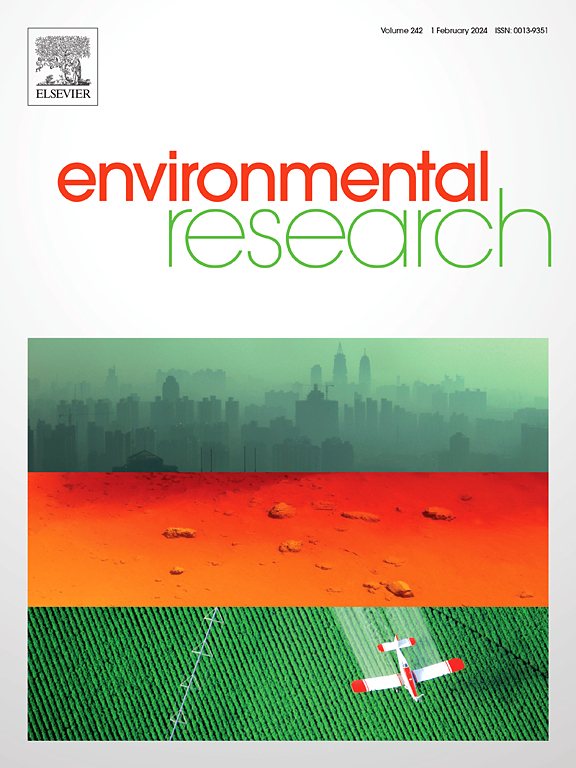A spatial machine learning approach to exploring the impacts of coal mining and ecological restoration on regional ecosystem health
IF 7.7
2区 环境科学与生态学
Q1 ENVIRONMENTAL SCIENCES
引用次数: 0
Abstract
Ecosystem health is an important approach to measuring urban and regional sustainability. In previous studies, the spatiotemporal changes of ecosystem health have been addressed using comprehensive assessment index system. However, the quantitative contribution of human activities and climate change to ecosystem health was less examined. In this study, Shuozhou City, a coal resource-based city, was chosen to explore the response of ecosystem health to human activities using the Geographically Weighted Artificial Neural Network (GWANN) model. The results showed a distinct improvement of ecosystem health in Shuozhou City from 1990 to 2020. The contribution of human activities increased during the study period, while the contribution of climate change decreased as a consequence of coal mining expanding. By 2020, human activities contributed 76% to ecosystem health compared with 24% of climate change. The direct impact of coal mining on ecosystem health occurred mainly in the surrounding areas within a radius of 6 km and 17 km under low and high mining intensity respectively. Ecosystem health will further decline by 2030 based on the scenario in which current coal mining is continued. However, only stopping mining activities in small coal mining areas for ecological restoration but keeping large coal mining areas in production, will realize 92.6% of restoration effects on ecosystem health as compared to ceasing all mining activities. This study examines the effects of coal mining on ecosystem health in resource-based cities, and underscores the importance of large coal mining sites in ecological restoration.
探索煤炭开采和生态恢复对区域生态系统健康影响的空间机器学习方法。
生态系统健康是衡量城市和区域可持续性的重要方法。在以往的研究中,生态系统健康的时空变化是通过综合评估指标体系来解决的。然而,人类活动和气候变化对生态系统健康的定量贡献研究较少。本研究选择了煤炭资源型城市朔州市,利用地理加权人工神经网络(GWANN)模型探讨生态系统健康对人类活动的响应。结果表明,从 1990 年到 2020 年,朔州市生态系统健康状况明显改善。在研究期间,人类活动的贡献增加了,而气候变化的贡献由于煤炭开采的扩大而减少了。到 2020 年,人类活动对生态系统健康的贡献率为 76%,而气候变化的贡献率为 24%。煤炭开采对生态系统健康的直接影响主要发生在半径分别为 6 千米和 17 千米的周边地区,开采强度分别为低和高。根据目前继续采煤的情景,到 2030 年生态系统健康将进一步下降。然而,与停止所有开采活动相比,停止小采煤区的开采活动进行生态恢复,但保持大采煤区的生产,将实现 92.6% 的生态系统健康恢复效果。本研究探讨了煤炭开采对资源型城市生态系统健康的影响,并强调了大型煤炭开采区在生态恢复中的重要性。
本文章由计算机程序翻译,如有差异,请以英文原文为准。
求助全文
约1分钟内获得全文
求助全文
来源期刊

Environmental Research
环境科学-公共卫生、环境卫生与职业卫生
CiteScore
12.60
自引率
8.40%
发文量
2480
审稿时长
4.7 months
期刊介绍:
The Environmental Research journal presents a broad range of interdisciplinary research, focused on addressing worldwide environmental concerns and featuring innovative findings. Our publication strives to explore relevant anthropogenic issues across various environmental sectors, showcasing practical applications in real-life settings.
 求助内容:
求助内容: 应助结果提醒方式:
应助结果提醒方式:


